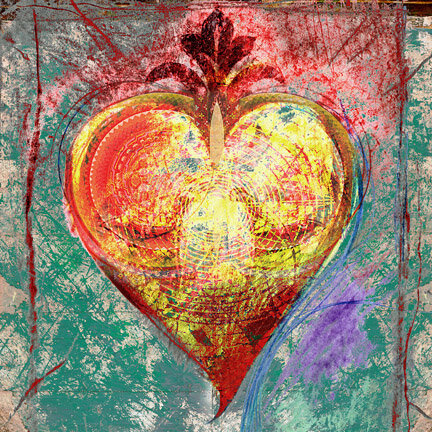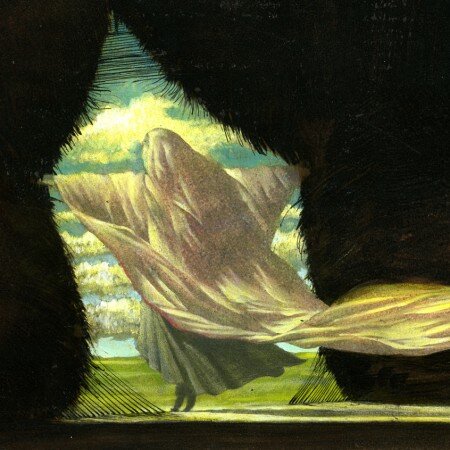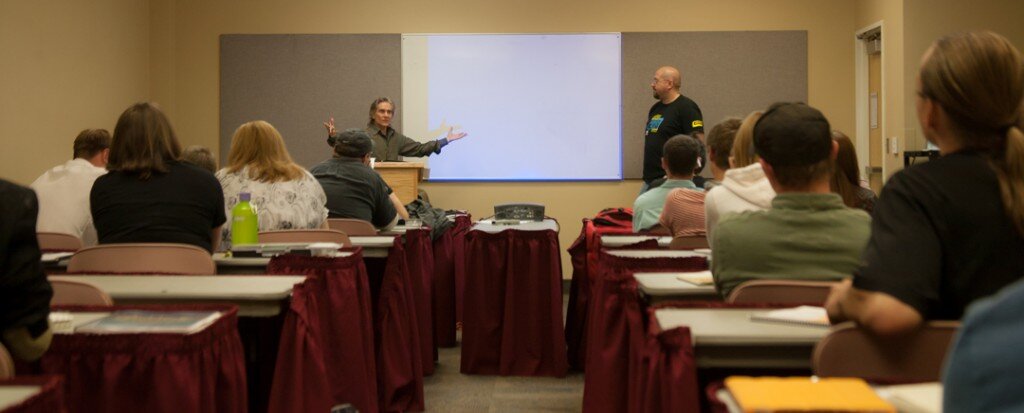Whenever a new idea is born it is often greeted with awe, disdain or simply, ‘What?’
When the synapses in my brain aligned to create a class on artist empowerment and prosperity, it was crystal clear as to the concept and worth of what I was manifesting. However, the idea of Artist As Brand is so unique to any education taught in any school, college or university out there, so it's understandable that there are some questions about what it is I teach exactly. This post is going to clarify the principles/manifesto of this course (some call it a movement) and exactly what value you will receive from your time and $295 investment.
What is Artist As Brand?
The goal of Artist As Brand is to connect the individual to their purpose, art and prosperity. Connecting your art deeply with your truth creates a mark that is so authentic and profound it embodies a unique power. Align this vision with your individual collectors through targeted marketing techniques and you begin to build a one-of-a-kind art empire that can sustain you financially for the rest of your life.
ARTIST art·ist [ahr-tist]–noun 1. A person who produces works in any of the arts that are primarily subject to aesthetic criteria. 2. A person who practices one of the fine arts. 3. A person whose trade or profession requires a knowledge of design, drawing, painting, etc… A commercial artist. 4. A person who works in one of the performing arts, actor, musician, singer; dancer, public performer. 5. A person whose work exhibits exceptional skill.
BRAND [brand]–noun and verb 1. Kind, grade or make, as indicated by a stamp, trademark or the like. 2. A mark made by burning or otherwise, to indicate kind, grade, make, ownership, etc… 3. A kind or variety of something distinguished by some distinctive characteristic. 4. To impress indelibly. 5. A brand name.
The essence of these two words together can be defined thus: A creator who has made their mark!
Some fine artists scoff at the word brand. Whether you like the word or not, all visionary creators throughout time who have made their mark on humanity are brands. They are remembered for their impact on the collective consciousness of the planet and many are household names. I call the Artist As Brand workshop an artist boot camp because it is highly focused with the intention of aligning and defining (in some instances re-aligning and re-defining) the purpose and direction of an individual's career path. We start deep in the heart and move outwards connecting your talent to your marketing, patrons and collectors so there is perfect alignment.
The knowledge for this workshop is derived from 28+ years working as a professional artist inside and outside of the publishing, film and gallery industries as well as teaching higher education.
The following is an outline of the course and what students will learn and come away with. This is an evergreen online course. Students get lifetime access to the course including all future updates and resources.
MODULE ONE: DECLARE YOUR PURPOSE: You will learn your Core Virtue. Knowing your core virtue is the first step to establishing a foundation which your career is built upon. This intimate part of yourself is a driving force in your life. It goes deeper than your art. Declaring your core purpose aligns your heart with your art in a profound manner.
Design a Personal Logo/Heraldic Shield: You will create a simple image that will represent what you just learned about yourself. It will represent your Core Virtue.
Design a Vision Board: This template is defined by everything you love in your life—what turns you on and keeps you motivated as a unique individual. The Vision Board represents the niche markets that will be your domain and will make up your one-of-a-kind art empire.
Practice The Art of The Blurb: You will learn how to introduce and represent yourself to people. Most artists do not have a clue how to speak with others about who they are and what they do. This exercise is designed to increase your confidence and generate interest in who you are and what you have to offer.
Every workshop includes special lectures by esteemed individuals who encompass the Indie Art Spirit. Guests include art writer Peter Clothier, licensing expert Maria Brophy, social media master and botanical perfumer Roxana Villa.
MODULE TWO: PLAN YOUR BRAND: You will learn to design your art and product line. We will look at artists who are successful in this area and discuss new approaches to making income from your art. We will define what art and products can manifest from your Vision Board.
Create An Innovative Marketing Blueprint: You will learn to create a marketing blueprint that integrates high tech and high touch medias. We look at these two very different but synergistic marketing models. You learn how to best utilize these promotional mediums.
Learn The Simple Yet Powerful Art of Business and Commerce: Are you an art hobbyist or an art professional? This is a short lecture on straight up, common sense business practices. If you are selling art, you are a business. Start acting like one.
Connect With Artist Entrepreneur Leaders: Learn to create a community and hook up with those who are successful in order to keep yourself inspired and in the company of great people.
MODULE THREE: EMPOWER YOUR PROSPERITY: Commit to sustainability. You will design a five-year marketing strategy that takes a serious look at your finances, living situation and overall goals personally and professionally. What is possible? Connecting to your BHAG (Big Hairy Audacious Goal).
Recognize the Potential of Team Building and The Power of a Mastermind: Your peers can be some of your greatest assets from a personal, professional and moral support capacity. You will start this process right in the class!
Conceptualize a Product Ready for Manufacture: We begin to look at the details of what it’s going to cost in labor, time and materials to create a product from start to finish.
Review: In addition participants will have access to other career enhancing promotional opportunities only available to Artist As Brand students! Some of these details can be found on the ABOUT page. Now you are ready to create your own Art Empire!
I hope this information helped to clarify the purpose and design of my class. Come on and join the Indie Art Revolution! Sign up today! Lifetime access is included and you may complete the class online at your own pace.
See what participants are saying.
To Your Artist Empowerment and Prosperity,
—Greg



























